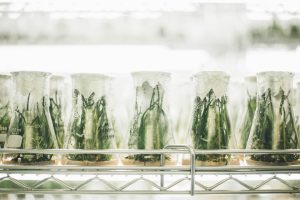Pollution Pigments: Capturing Smog Particles to Create Fabric Dyes
In recent years, pollution has become a major concern for our environment, and it’s impact on our health and well-being is undeniable. Smog, in particular, has been a major contributor to air pollution, making it difficult for us to breathe and enjoy the fresh air. However, what if we told you that there is a way to turn this harmful smog into something beneficial? That’s right, pollution pigments are the latest innovation in the fashion industry, providing a solution to both pollution and sustainable fashion. In this article, we will explore the concept of pollution pigments and how they are being used to create fabric dyes, leading the way towards a cleaner and greener fashion industry. 
The Problem of Smog
Before diving into the concept of pollution pigments, let’s first understand the severity of the problem that it aims to solve. Smog, which is short for “smoke” and “fog”, is a type of air pollution that is formed as a result of industrialization and urbanization. It is a deadly mix of smoke, gases, and fine particles that make it difficult for us to breathe and also hinders plant growth. In countries like China and India, smog has become a major issue, causing not only health problems but also affecting the economy and overall quality of life. With the fashion industry being one of the biggest contributors to pollution, it’s time for us to find sustainable solutions to mitigate the impact of smog.
Introducing Pollution Pigments
Pollution pigments, also known as “smog dye”, are unique colorants that are created by capturing smog particles from the air. These pigments are made up of tiny particles known as PM2.5, which are one of the main components of smog. This innovative process of collecting and converting pollution into pigments was first developed by Dutch designer, Daan Roosegaarde, and his team, in 2016. Since then, fashion brands like Adi Shankara and G-Star RAW have also used pollution pigments to create sustainable and eco-friendly clothing.
How it Works
Capturing Smog Particles
The first step in creating pollution pigments is to capture the smog particles from the air. This is done with the help of specially designed vacuum cleaners that suck the polluted air and trap the PM2.5 particles. These particles are then sent to a lab to be purified and processed before they can be used as fabric dyes.
Creating the Pigments
Once the smog particles are collected and purified, they are mixed with a binding agent, such as acrylic, to create the pollution pigments. This mixture is then ground down into a fine powder and mixed with water to create a dye. This dye is then used to color fabrics, just like any other fabric dye.
The End Result
The end result of this process is a beautiful range of colors, ranging from shades of grey to earthy tones, that are unique and truly one-of-a-kind. The pollution pigments not only provide a sustainable solution for the fashion industry, but they also showcase the beauty and potential of something that was once considered hazardous to our environment.
The Benefits of Pollution Pigments
Pollution pigments offer numerous benefits, not only for the environment but also for the fashion industry. Here are some of the main advantages of using pollution pigments for fabric dyes:
Sustainable Solution
Pollution pigments offer a sustainable solution for the fashion industry as they use a waste product (polluted air) to create something beneficial (fabric dyes). This process helps to reduce the amount of harmful smog in the air, while also providing an eco-friendly alternative to traditional fabric dyes that use toxic chemicals.
Unique and Customizable
Due to the nature of pollution pigments, each batch of fabric dye will have its unique and one-of-a-kind color. This makes it possible for fashion brands to offer customizable products to their customers, providing them with a level of exclusivity that cannot be replicated.
Creative Expression
With pollution pigments, fashion designers have a new and exciting way to express their creativity and make a statement. The use of these unique fabric dyes can add depth and meaning to their designs and send a powerful message about sustainability and the environment.
Conclusion
Pollution pigments are a revolutionary concept that has the potential to transform the fashion industry and create a healthier and cleaner environment. Through the use of these sustainable fabric dyes, we can mitigate the impact of smog on our planet and take a step towards a more sustainable future. It’s time for us to embrace this technology and make it a part of our everyday lives, one garment at a time.










